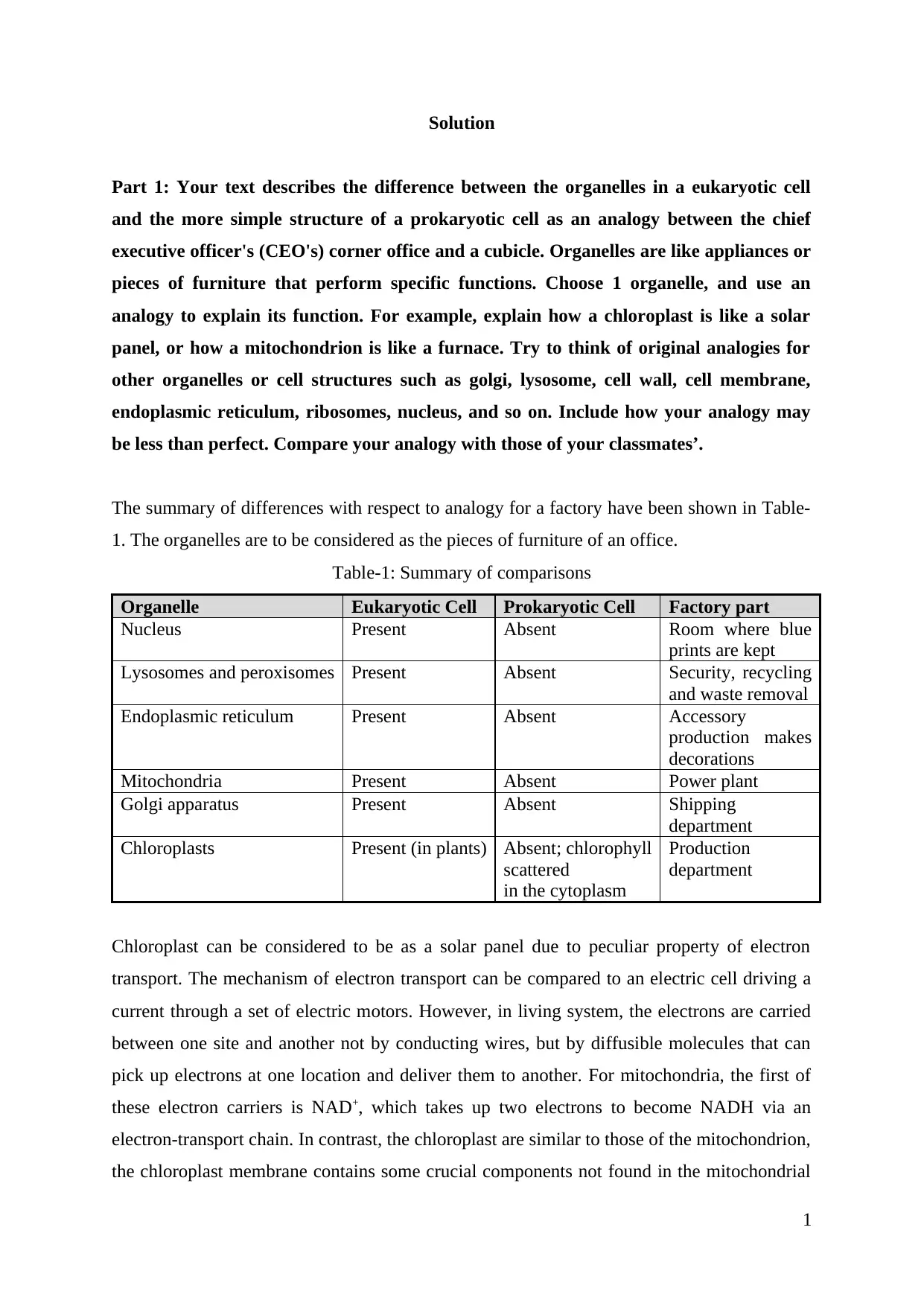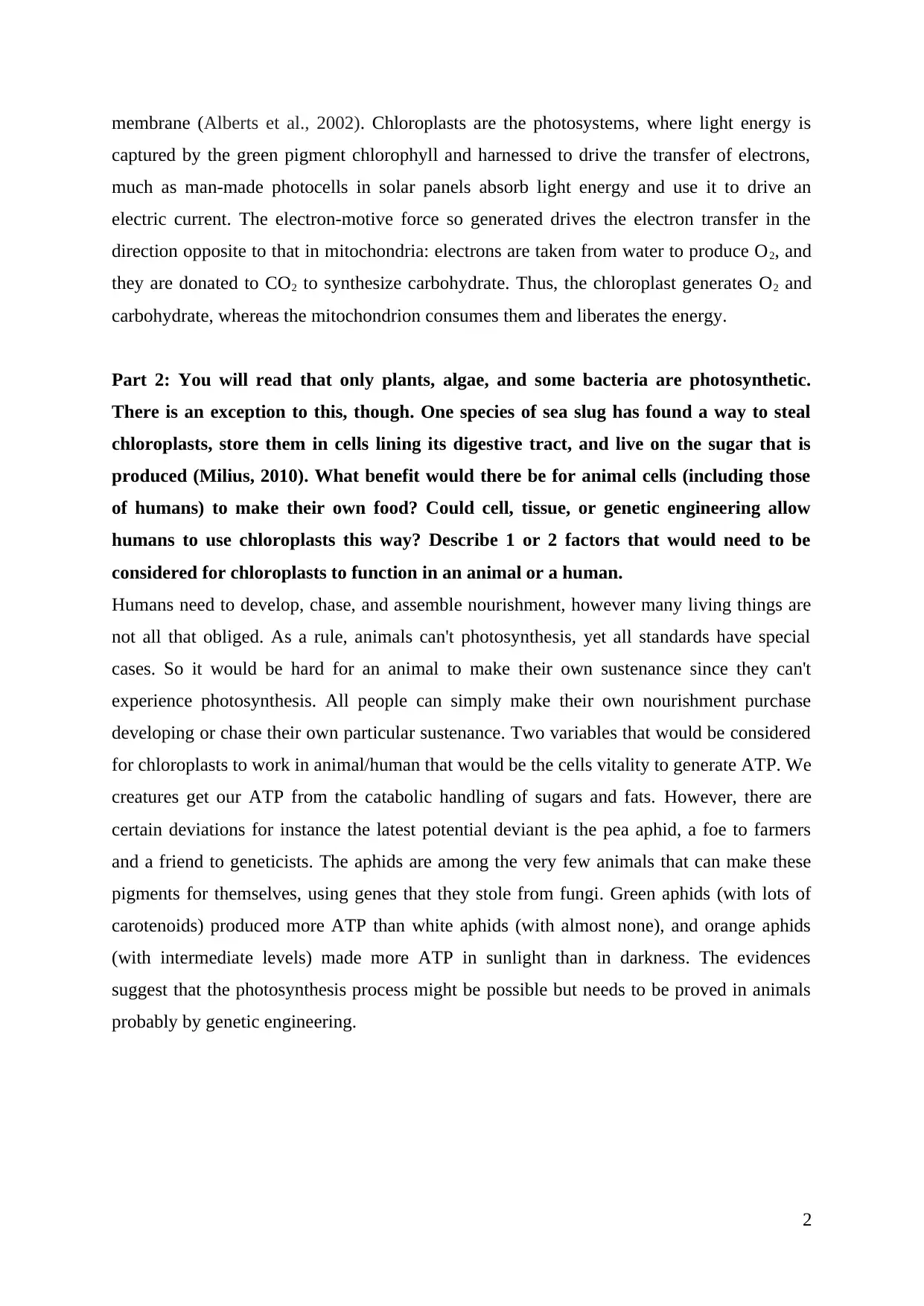Comparative Analysis of Cell Organelles: Analogy and Photosynthesis
VerifiedAdded on 2019/09/19
|3
|928
|161
Homework Assignment
AI Summary
This assignment delves into the structure and function of cell organelles by drawing analogies to familiar concepts like office furniture and factory parts. The student compares organelles such as chloroplasts and mitochondria to solar panels and power plants, respectively, highlighting the electron transport mechanisms and energy conversion processes. The assignment then explores the possibility of animals, including humans, utilizing photosynthesis, discussing the challenges and potential factors that would need to be considered, such as energy production and genetic engineering. The student references scientific literature to support the analogies and arguments, providing a comprehensive understanding of cell biology and the potential for future advancements in the field. The assignment concludes with a discussion of the limitations of the analogies and the potential for future research in this area.
1 out of 3










![[object Object]](/_next/static/media/star-bottom.7253800d.svg)